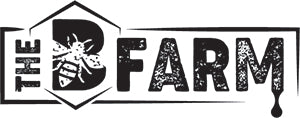A productive queen bee results in a thriving hive, more honey production, and strong colonies that can withstand environmental challenges. Beekeepers might wonder why their hives thrive during certain months and struggle in others. Seasonal changes affect queen bee productivity. By recognizing these patterns and adapting your management practices accordingly, you can maximize your hive’s potential year-round.
Spring Awakening Triggers Peak Performance
Spring brings the most dramatic increase in queen productivity with long daylight hours and stabilized temperatures above 55 degrees Fahrenheit. During this critical period, queens ramp up their egg-laying from winter’s minimal activity to peak production levels of 1,500-3,000 eggs daily.
The availability of fresh pollen and nectar provides essential protein sources that fuel this reproductive surge. Queens require high-quality nutrition to maintain their intensive laying schedule, making spring forage absolutely vital for colony expansion.
Summer Heat Creates Production Challenges
While summer might seem ideal for bee activity, extreme heat can actually suppress queen productivity. When temperatures exceed 95 degrees Fahrenheit consistently, queens often reduce egg-laying to help colonies manage thermal stress. When this happens, provide adequate ventilation and shade during summer peaks.
Place the hive away from direct afternoon sun, and make sure the hive receives sufficient upper ventilation. These techniques will maintain the stable temperatures queen bees need for consistent productivity.
Autumn Preparation Drives Natural Decline
As daylight decreases and temperatures drop, queens naturally reduce egg production in preparation for winter survival. The timing of this decline varies by geographic location. Northern climates may see reduced laying as early as late August, while southern regions might maintain higher productivity through October. Providing supplemental feeding when natural nectar sources dwindle can extend productive laying periods and ensure colonies enter winter with adequate population levels.
Winter Survival Mode Diminishes Bee Activity
Winter represents the most challenging period for queen productivity. In regions with sustained freezing temperatures, queens may stop laying entirely for several months, conserving energy for colony survival. Successful winter management focuses on ensuring adequate food stores rather than trying to stimulate laying. Queens will naturally resume higher production as spring conditions return.
The B Farm is a trusted source if you’re in the market for resilient queen bees for sale. Our queen bees are productive and adaptable. Whether you’re a hobbyist or professional beekeeper, The B Farm will provide high-quality queens that will result in strong colonies.
Maximizing Your Hive’s Year-Round Success
The weather greatly influences your hive and queen bee’s productivity, from egg-laying to honey production. Keeping track and consistently monitoring your bees when the weather permits can help keep your hive happy and healthy, no matter the season.
Understanding how seasonal changes affect queen bee productivity empowers you to work with natural cycles rather than against them. This knowledge leads to healthier colonies, increased honey production, and more sustainable beekeeping practices that support your queens through every season.
